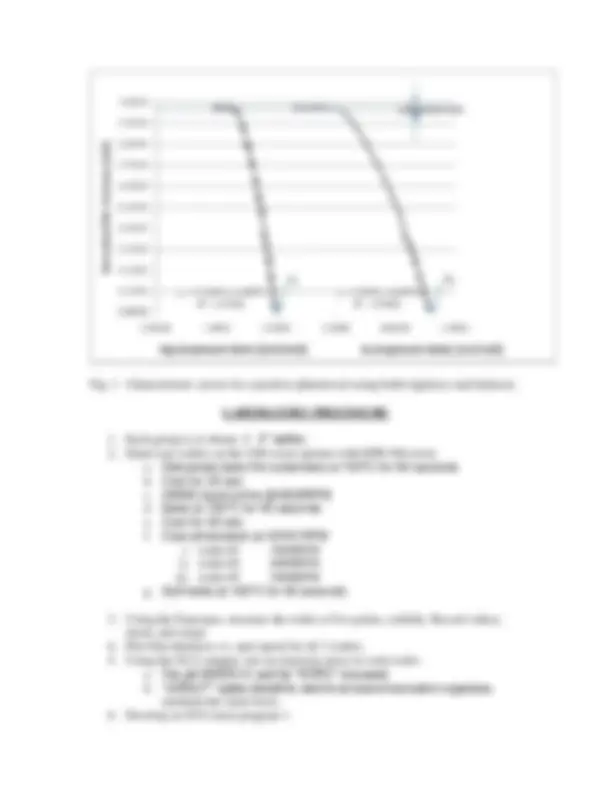




Study with the several resources on Docsity

Earn points by helping other students or get them with a premium plan


Prepare for your exams
Study with the several resources on Docsity

Earn points to download
Earn points by helping other students or get them with a premium plan
Community
Ask the community for help and clear up your study doubts
Discover the best universities in your country according to Docsity users
Free resources
Download our free guides on studying techniques, anxiety management strategies, and thesis advice from Docsity tutors
An experiment aimed at determining the lithographic sensitivity and contrast of positive photoresists used in microelectronic engineering. The objective is to relate these performance criteria to process capability. The basics of photolithography, the role of photoresists, and the importance of contrast and sensitivity in microelectronic fabrication.
Typology: Lab Reports
1 / 4

This page cannot be seen from the preview
Don't miss anything!



To achieve high resolution and adequate throughput, a photoresist must possess relatively high contrast and sensitivity to exposing radiation. The objective of the experiment is to determine the lithographic sensitivity and contrast of positive photoresists and relate these performance criteria to process capability.
INTRODUCTION
Photolithography is the production of a three dimensional relief image based on the exposure with light and subsequent development of a photographic emulsion or light sensitive polymer called a photoresist. Microlithography is the lithography technique used to print ultra-small patterns, used primarily in the semiconductor industry. The types of radiation, materials, and tools are important to characterize a process, but the basic steps are generally the same as those for conventional optical lithography. Here, a radiation sensitive polymer material, called a photoresist, is applied as a thin film to a substrate. Image-wise exposure is then given to the photoresist, usually through a mask of clear and opaque areas on a glass substrate. Clear areas within the mask allow exposure of the photoresist material, which photochemically alters its composition. Depending on the photoresist type, exposure will either increase or decrease the solubility of exposed areas in suitable solvents, or developer. A positive photoresist material will become more soluble in exposed regions, while a negative photoresist will become less soluble in exposed regions. This solubility differential of exposed to unexposed areas in a resist allows reproduction of the mask image into the photoresist. After development, regions of the substrate (usually Si or SiO2) are no longer covered by the photoresist film. Further subtractive or additive processing can now be performed by either etching unprotected areas or depositing layers over exposed areas of the substrate. The photoresist, therefore, must be capable of reproducing desired pattern images and provide protection, or resistance, for the substrate for subsequent processes.
Photoresists are generally organic materials, polymeric in nature, with properties tailored to specific performance criteria. Resists may be classified either as positive or negative, depending on response to exposure. In two component systems, the resist is formulated from a base matrix resin, which serves as a binder for the material, and a sensitizer, which provides appropriate exposure sensitivity. In addition to these components is a casting solvent which keeps the resist in a liquid state until application, along with dyes, plasticizers, surfactants, or other additives to tailor resist performances. Positive photoresist accomplishes an image-wise solubility differential upon exposure through changes produced in its sensitizer component.
The effectiveness of a photoresist for microelectronic fabrication depends on a number of factors. Not only must a material possess proper sensitivity and resistance properties, it must be suited to the remainder of the fabrication process.
The resolution and contrast of a resist material is important. The term resolution is used to specify the consistent ability to print minimum size images under conditions of reasonable manufacturing variation. Contrast of a resist directly influences resolution, resist profiles, and line width control. Contrast is measured in terms of Gamma ( ), and is related to the rate of polymer chain scission and changes in solubility. Resists with higher contrasts result in better resolution than those with low contrast. If a resist had infinite contrast, vertical resist profiles would result independent of image contrast.
Calculation of contrast for a typical positive resist is shown below:
Where: Contrast is in terms of Gamma ( related to the rate of polymer chain scission and changes in solubility Initial Thickness = t 0 ( ) Thickness Lost after development = t (A) Exposure energy = dose (mJ/cm^2 )
** log (dose) = .4343 ln (dose) In industry, some places use the log (dose) in place of ln (dose). It is important to recognize this difference and know how to convert the numbers for.
For a positive resist, increases in exposure causes decrease in film thickness until complete removal of the resist is achieved. The corresponding exposure dose, or critical dose, is Dc or E 0. To experimentally calculate contrast, photoresist films are given known amounts of exposure and resultant thickness after development is measured. The film thickness is normalized and plotted as in Figure 1. Contrast is determined from the extrapolated slope of the linear portion of the response curve.